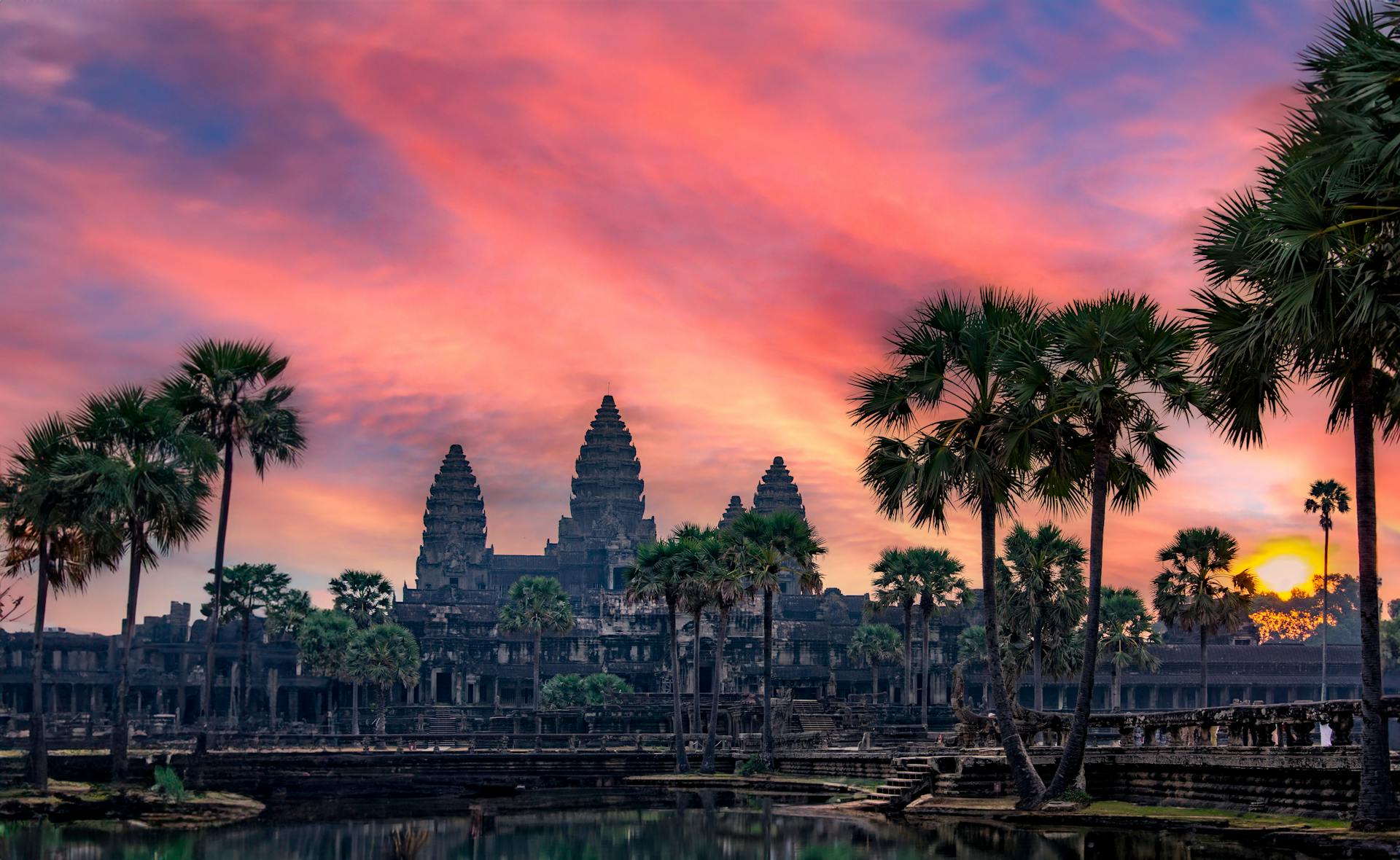Angkor Wat stands as a towering testament to human ingenuity and spiritual devotion, encompassing both the architectural brilliance and profound cultural significance of the Khmer Empire. As one of the world’s most renowned historical monuments, Angkor Wat holds a special place in the hearts of Cambodians and captures the imagination of visitors from around the globe. This sprawling temple complex, located in the heart of Cambodia near the city of Siem Reap, is a symbol of the country’s rich heritage and enduring resilience.
At the core of Angkor Wat’s identity lies its intricate connection to Indian culture and civilization. From its origins as a Hindu temple dedicated to gods like Vishnu to its later transformation into a center of Buddhist worship, Angkor Wat bears the unmistakable imprint of Indian influence. The echoes of Indian epics, mythology, and architectural styles reverberate throughout its sprawling corridors and towering spires.
The Hindu origins of Angkor Wat trace back to its construction during the reign of King Suryavarman II, a prominent ruler of the Khmer Empire in the early 12th century.
King Suryavarman II commissioned the construction of Angkor Wat as a grand state temple dedicated to the Hindu god Vishnu. The temple was intended to serve as a symbolic representation of Mount Meru, the mythical abode of the gods in Hindu cosmology.
Angkor Wat’s architecture and design are replete with Hindu symbolism and iconography. The temple’s layout, with its towering central tower and surrounding galleries, mirrors the cosmic order envisioned in Hindu cosmology. Elaborate bas-reliefs and carvings adorn the walls, depicting scenes from Hindu epics such as the Ramayana and Mahabharata, as well as celestial beings, mythical creatures, and divine figures.
Devotion to Hindu deities, particularly Vishnu, Shiva, and Brahma, is evident throughout Angkor Wat. Vishnu, the preserver god, occupies a central place of worship within the temple complex, with numerous shrines and sanctuaries dedicated to him. Shiva, the destroyer god, is also venerated, along with Brahma, the creator deity, underscoring the multifaceted nature of Hindu religious practice at Angkor Wat.
The influence of Indian temple architecture on Angkor Wat’s layout and construction techniques is unmistakable. The temple’s design bears striking similarities to South Indian Dravidian temple architecture, characterized by its towering gopurams (entrance towers), mandapas (halls), and vimanas (spires). The use of sandstone, a common building material in South India, further reflects this influence. Additionally, Angkor Wat incorporates elements of Khmer architectural innovation, such as its unique cruciform layout and integration with the surrounding landscape.
Challenges faced in preserving Angkor Wat:
Environmental degradation: Climate change, including increased rainfall and temperature fluctuations, poses risks to the structural integrity of the temple complex.
Natural disasters: Vulnerability to earthquakes and floods threatens the stability of Angkor Wat’s ancient structures.
Human impact: Tourism activities, including foot traffic and improper maintenance, contribute to wear and tear on the site’s delicate carvings and infrastructure.
Illegal excavation and looting: The illicit removal of artifacts from Angkor Wat undermines conservation efforts and diminishes the site’s historical value.
Role of UNESCO and international organizations:
UNESCO’s designation of Angkor Wat as a World Heritage Site has facilitated international cooperation and funding for conservation projects.
Collaborative efforts between UNESCO, the Cambodian government, and various stakeholders aim to develop comprehensive conservation plans and strategies.
International organizations such as the World Monuments Fund and the Global Heritage Fund provide technical expertise, funding, and resources to support conservation initiatives at Angkor Wat.
Sustainable tourism initiatives:
Implementation of visitor management strategies, including ticketing systems, designated pathways, and visitor education programs, helps minimize the impact of tourism on the site.
Promotion of eco-friendly transportation options, such as cycling and electric shuttles, reduces carbon emissions and congestion around Angkor Wat.
Community-based tourism initiatives empower local communities to benefit from tourism revenue while promoting cultural awareness and preservation.
Future prospects for conservation and preservation:
Continued investment in scientific research and monitoring is essential for understanding the complex factors affecting Angkor Wat’s conservation.
Integration of innovative technologies, such as 3D modeling and remote sensing, enhances conservation efforts by providing accurate data for monitoring and restoration.
Public awareness campaigns and educational programs raise awareness about the importance of preserving Angkor Wat and foster a sense of stewardship among local and global communities.
In conclusion, Angkor Wat’s significance as a cultural and historical marvel cannot be overstated. Beyond its architectural grandeur, it embodies the rich heritage and spiritual depth of the Khmer Empire. As we reflect on its enduring legacy, we are reminded of the importance of preserving this cultural treasure for future generations. It is imperative that we continue to support conservation efforts and foster appreciation for Angkor Wat’s profound significance, ensuring that it continues to inspire and captivate visitors from around the world.
More from NewsBuzz1 – How Did She Travel Vietnam’s Capital on a Low Budget?

